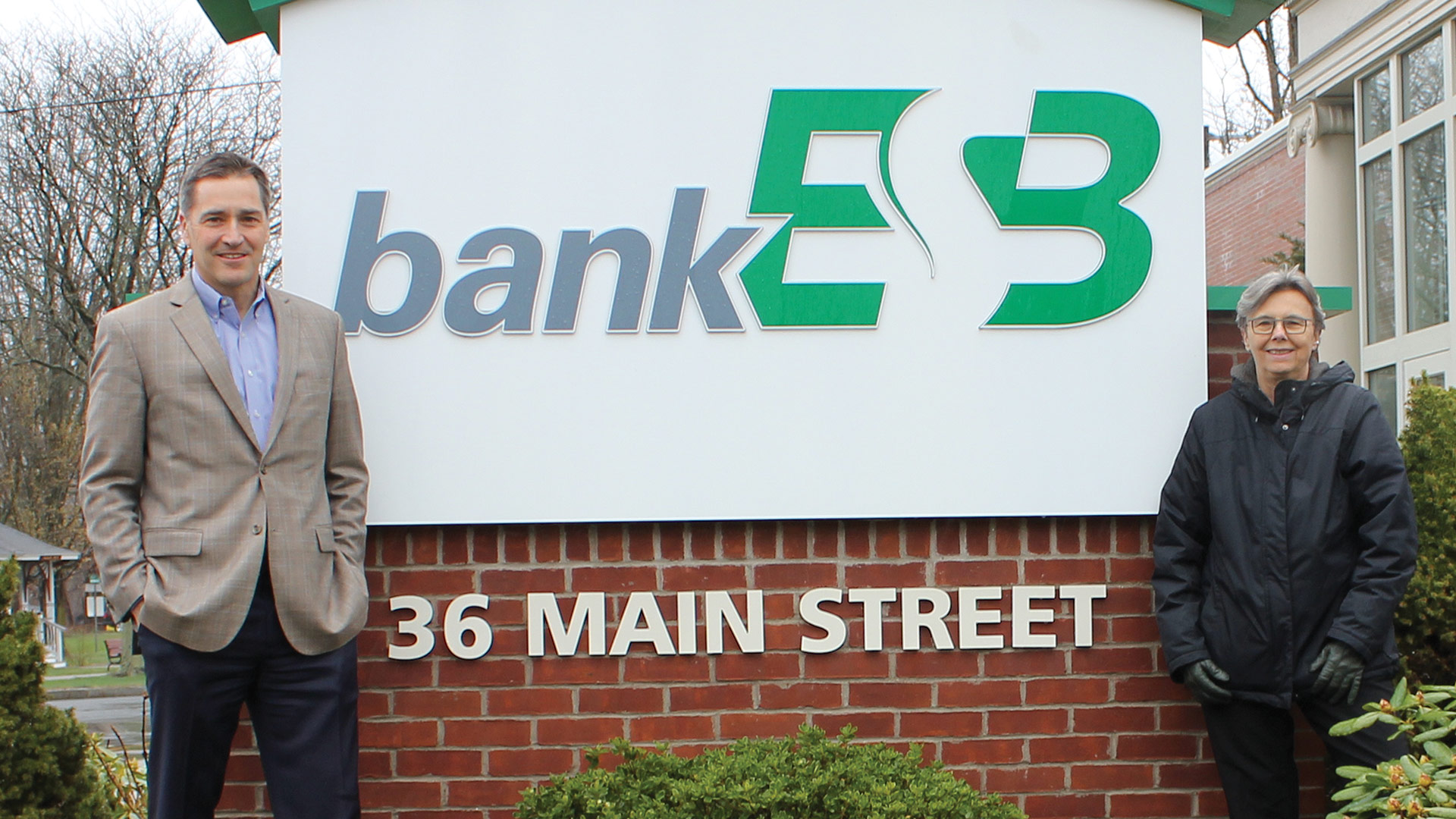Mixed Bag

Matt Sosik helped Char Gentes secure a PPP loan through bankESB that kept Riverside Industries employees paid for eight weeks
Char Gentes calls the Paycheck Protection Program “a lifeline.” Her nearly 200 employees no doubt agree.
Gentes is the president and CEO of Riverside Industries, a nonprofit that serves people with disabilities, helping them find ways to achieve daily independence, from securing and maintaining jobs to undertaking activities like voting and going to the store.
In mid-March, the organization was shut down by the same mandate that has shuttered the doors on countless businesses and nonprofits across Massachusetts. Four weeks later, Riverside hadn’t laid anyone off — but that situation was unsustainable.
“We had been keeping our employees paid as we were waiting to hear what the state reimbursement was going to be; actually, a lot of nonprofits were doing that,” Gentes told BusinessWest. “The senior management, myself, and the board were all on the same page — we wanted to keep our employees home, we wanted to have their back, and we wanted, as much as possible, to continue to pay them 100% and make sure they had health insurance. These human-service workers are often people who live paycheck to paycheck.”
When bankESB approved a Paycheck Protection Program (PPP) loan to Riverside Industries, Gentes could breathe a little easier, as the loan will allow it to pay its employees for the next eight weeks.
“We’re grateful for those eight weeks, and we certainly hope to be able to open our doors sometime in June,” she said.
While Riverside’s Easthampton facilities are closed, its mission has not stopped, as the organization continues working with clients under a new remote service model. Without the PPP loan, Gentes said that she would be facing some difficult decisions on how to keep her organization operational.
That contrast — between desperation and relief — explains why so many small businesses are frustrated with the PPP, which quickly ran out of money, and also generated plenty of confusion in the banks where business owners applied for loans.
The PPP is a small-business stimulus program included in the federal government’s Coronavirus Aid, Relief, and Economic Security (CARES) Act. The PPP initially provided $349 billion for U.S. Small Business Administration (SBA) lenders like bankESB to fund loans to businesses in order to guarantee eight weeks of payroll and other costs to help businesses remain viable. To qualify, businesses must have 500 or fewer employees and demonstrate that they have been negatively affected by COVID-19.
When the $349 billion ran out in less than two weeks, the shortfall generated an immediate outcry — not only for a second infusion of funding, but because of news that large, national companies were claiming tens of millions in PPP funds while small businesses couldn’t get access.
That second round of funding — $310 billion in total, approved by the U.S. Congress on April 22 — may not last much longer, but banks have likely learned lessons from the first round.
Sense of Urgency
Matt Sosik, president and CEO of bankESB, remembers those first days of the PPP well.
“It was harrowing. They did, in fact, rush it because they felt the urgency … but the program was not ready for prime time,” he recalled. “When it rolled out, a lot of people were frustrated, but — and I’m not trying to sound defensive — I wish people wouldn’t blame local banks. We were in the dark; the customers knew what we knew, and it wasn’t enough. They didn’t provide enough instruction.
“In the end, we made it out on the other side, and we got caught up,” Sosik told BusinessWest in mid-April, noting that the three banks in the Hometown Financial Group family, including bankESB, approved $100 million under the program, and spent the next week getting money into the hands of the people who were approved.
“It was very, very difficult — a massive amount of work by our employees. They kept grinding and got us out on the other side of things,” he said.
U.S. Treasury Secretary Steven Mnuchin reported that, following the PPP launch, the SBA processed more than 14 years’ worth of loans in less than 14 days.
“The PPP enjoyed broad-based participation across the country from lenders of all sizes and a wide array of industries and businesses,” he noted. “From its start on April 3, PPP provided payroll assistance to more than 1.6 million small businesses in all 50 states and territories. Nearly 5,000 lenders participated in this critical program, including significant lending by community banks and credit unions. Nearly 20% of the amount approved was processed by lenders with less than $1 billion in assets, and approximately 60% of the loans were approved by banks with $10 billion of assets or less. No lender accounted for more than 5% of the total dollar amount of the program.”
“It was harrowing. They did, in fact, rush it because they felt the urgency … but the program was not ready for prime time.”
The majority of these loans — 74% — were for under $150,000, he noted, but that didn’t stop a swell of outrage following reports of large companies, from Ruth’s Chris Steak House to Hallidor Energy, claiming eight-figure PPP loans.
Few in Washington balked at the need for additional funding. The second round of $310 billion is part of a larger, $480 billion relief package that also includes money for hospitals and expanded COVID-19 testing. Of the $310 billion, $60 billion will be set aside for smaller lending facilities, including community financial institutions; small, insured depository institutions; and credit unions with assets under $10 billion.
The Next Wave
Bankers hope for a smoother process getting the new funds approved.
“It got off to a rocky start and got a lot of bad press — I Googled and found maybe one story with a remotely positive angle to it,” Sosik said, before coming back to Riverside Industries. “This is a story about the good parts of humanity — the work Riverside does and our ability to play a small role in helping them stay alive. They do such incredible work, such necessary work.
“Riverside is a strong organization financially,” he went on. “It’s just that, when funding isn’t coming in, it doesn’t have a war chest to keep dipping into.”
As for Gentes, she’s hoping the loan helps her not only take care of employees, but prepare them to return when the governor says it’s OK to open the doors and restart person-to-person services.
“When we’re ready, we need our workforce to come back, and we need them to be ready to come back,” she said, adding that the organization’s roughly 150 clients are called once a week, maybe twice, to make sure they’re OK. “We’re in the process of developing remote learning, and assessing what each client has available to them in terms of technology to make this happen.”
Countless other small businesses and nonprofits have equally pressing needs, and could use a lifeline, she told BusinessWest. “Without it, a lot of nonprofits will go under.”
Sosik likes hearing that.
“I have to admit, it’s heartwarming to make a difference,” he said. “And I’ve heard some other good stories. There’s so much uncertainty — ‘I’ve put all my blood, sweat, and tears into my business; is it all over for me?’ To relieve that pressure has been a heartwarming experience for us.”
Joseph Bednar can be reached at [email protected]











